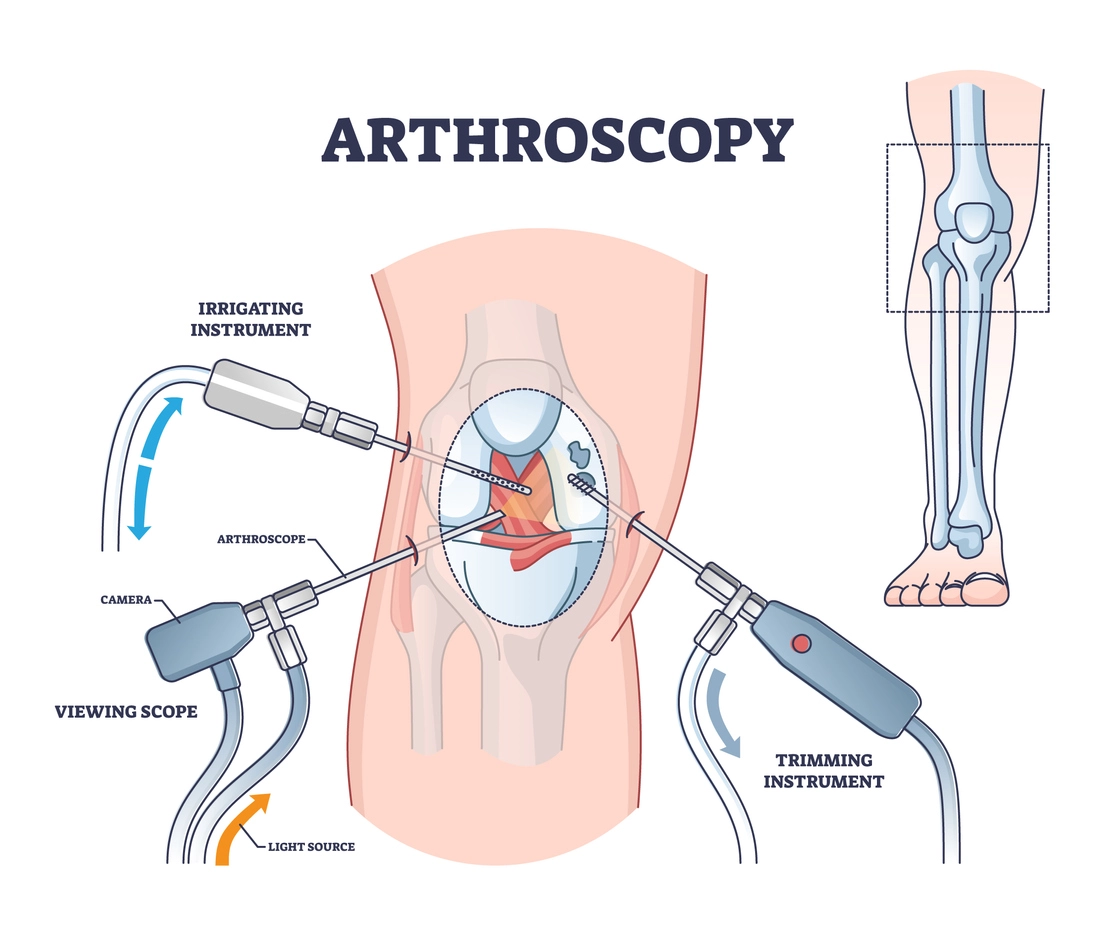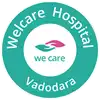Arthroscopy & Sports Medicine
Home » Core Departments » Arthroscopy & Sports Medicine

Introduction
Although sports medicine was only established formally as a specialty in the 20th Century, the history of doctors having involvement in treating athletes goes back to ancient times in Greek, Roman and Egyptian societies. Beginning in Switzerland in 1922 most countries have Sports medicine federations or associations. Indian Association of Sports Medicine & Indian Federation of Sports Medicine were started in 1987.
Conditions / Issues
Common sports injuries often lead athletes to seek help from a sports medicine specialist or Orthopedic Surgeons. These injuries include knee and shoulder injuries, fractures, ankle sprains, concussions, and cartilage damage. Most sports injuries involve soft tissue or bone and are typically treated without surgery. Their goal is to enhance an athlete’s performance while ensuring their safety.
Why Arthroscopy for sports injuries ?
Injuries affect bones & ligaments. Hence to look into the inside of a bone . The word arthroscopy comes from two Greek words, “arthro” (joint) and “skopein” (to look). The term literally means “to look within the joint.” Arthroscopy ( which includes tiny camera with light and other irrigating and trimming instruments. ). Although the inside of nearly all joints can be viewed with an arthroscope, six joints are most frequently examined with this instrument. These include the knee, shoulder, elbow, ankle, hip, and wrist.
How it is Done !
- Minimally Invasive Procedure: Knee arthroscopy is a minimally invasive surgical technique used to diagnose and treat problems inside the knee joint. It involves small incisions and the use of specialized instruments, resulting in less pain and faster recovery compared to traditional surgery.
- Arthroscope: The primary instrument used in knee arthroscopy is the arthroscope, a small, tube-like device equipped with a camera and light. It allows the surgeon to view the inside of the knee on a video monitor in real-time.
- Diagnostic Tool: Arthroscopy is commonly used to diagnose conditions such as torn meniscus, damaged cartilage, ligament injuries, and synovial problems. It provides a clear view of the knee’s internal structures, aiding in accurate diagnosis.
- Procedure Steps: During the procedure, the surgeon makes a few small incisions around the knee. The arthroscope is inserted through one of these incisions, while other instruments are introduced through the remaining incisions.
- Saline Solution: A sterile saline solution is pumped into the knee joint to expand the area, providing a clearer view and more space for the surgeon to work. This helps in better visualization and maneuverability of the instruments.
- Shaver: A specialized instrument called a shaver is used to remove damaged tissue or debris from the knee. It has a rotating blade that cuts and suctions away unwanted tissue.
- Repair Tools: For repairing damaged structures, various tools such as small scissors, forceps, and motorized burrs are used. These instruments help in trimming torn meniscus, smoothing rough cartilage, and repairing ligaments.
- Suture Anchors: In cases where ligaments or tendons need to be reattached, suture anchors may be used. These are small devices that anchor sutures into the bone, securing the repaired tissue in place.
- Meniscal Repair: For meniscal tears, arthroscopic techniques allow for partial removal or repair of the damaged meniscus. Depending on the type and location of the tear, sutures or special meniscal repair devices are used.
- Cartilage Restoration: Techniques such as microfracture, where small holes are made in the bone to stimulate cartilage growth, or cartilage grafting, can be performed arthroscopically to address cartilage damage.
- Post-Procedure Care: After the procedure, the incisions are closed with stitches or surgical tape. The knee is typically wrapped in a bandage, and patients are advised on post-operative care, including rest, ice application, and physical therapy.
- Recovery and Rehabilitation: Recovery time varies based on the extent of the procedure. Physical therapy is often recommended to restore strength and mobility. Most patients experience significant improvement in knee function and pain relief after a successful arthroscopy.
Some of the most common practiced usage of Arthroscopy is done in following injuries:


One of the most common knee injuries is an anterior cruciate ligament sprain or tear.Athletes who participate in high demand sports like soccer, football, and basketball are more likely to injure their anterior cruciate ligaments.
Cruciate Ligaments

These are found inside your knee joint. They cross each other to form an “X” with the anterior cruciate ligament in front and the posterior cruciate ligament in back. The cruciate ligaments control the back and forth motion of your knee.
The anterior cruciate ligament runs diagonally in the middle of the knee. It prevents the tibia from sliding out in front of the femur, as well as provides rotational stability to the knee.
CauseThe anterior cruciate ligament can be injured in several ways:
- Changing direction rapidly
- Stopping suddenly
- Slowing down while running
- Landing from a jump incorrectly
- Direct contact or collision, such as a football tackle
- Pain with swelling. Within 24 hours, your knee will swell. If ignored, the swelling and pain may resolve on its own. However, if you attempt to return to sports, your knee will probably be unstable and you risk causing further damage to the cushioning cartilage (meniscus) of your knee.
- Loss of full range of motion
- Tenderness along the joint line
- Discomfort while walking
Non Surgical Treatment
- Rest and Immobilization: Resting the injured area and immobilizing it with a brace or splint can help reduce pain and prevent further damage, allowing the body to heal naturally.
- Ice Therapy: Applying ice packs to the injured area for 15-20 minutes every few hours helps reduce swelling, inflammation, and pain. Ice therapy is most effective during the first 48 hours after an injury.
- Compression: Using compression bandages or wraps can help control swelling and provide support to the injured area. It also aids in reducing pain and promoting healing.
- Elevation: Elevating the injured limb above heart level can help reduce swelling by promoting fluid drainage away from the injured area. This is particularly useful in the initial stages of injury management.
- Physical Therapy: Physical therapy involves exercises and treatments designed to restore function, improve strength, flexibility, and range of motion. A physical therapist tailors the rehabilitation program to the specific injury and individual needs.
- Anti-inflammatory Medications: Non-steroidal anti-inflammatory drugs (NSAIDs) like ibuprofen and naproxen can help reduce inflammation, pain, and swelling. These medications are often used in the short term to manage acute injuries.
- Activity Modification: Adjusting activities to avoid movements that exacerbate the injury while still staying active can aid in recovery. For example, switching from running to swimming can reduce stress on a knee injury while maintaining cardiovascular fitness.
- Stretching and Strengthening Exercises: Incorporating specific stretching and strengthening exercises into the rehabilitation program helps in regaining flexibility and strength, reducing the risk of re-injury.
- Massage Therapy: Therapeutic massage can help improve blood flow, reduce muscle tension, and promote relaxation. It is often used to complement other treatments in the recovery process.
- Ultrasound Therapy: Ultrasound therapy uses sound waves to promote tissue healing, reduce inflammation, and alleviate pain. It is commonly used in physical therapy for various sports injuries.
- Electrotherapy: Techniques like transcutaneous electrical nerve stimulation (TENS) and electrical muscle stimulation (EMS) can help reduce pain, improve circulation, and facilitate muscle recovery.
- Nutritional Support: Proper nutrition plays a crucial role in the healing process. A diet rich in proteins, vitamins, and minerals supports tissue repair and recovery. Sometimes, supplements such as vitamin C, zinc, and omega-3 fatty acids are recommended to aid the healing process.
- Rehabilitation and Recovery: Sports medicine specialists design personalized rehabilitation programs to help athletes recover quickly and effectively from injuries. These programs focus on restoring strength, flexibility, and functionality.
- Performance Optimization: Beyond injury treatment, specialists work with athletes to optimize their performance. This includes tailored training regimens, biomechanical analysis, and performance assessments.
- Injury Prevention Strategies: Specialists emphasize the importance of preventive measures, such as proper warm-up routines, stretching exercises, and the use of protective gear to minimize the risk of injuries.
- Multidisciplinary Approach: Sports medicine often involves a team approach, including physical therapists, nutritionists, and psychologists, to address the various aspects of an athlete’s health and well-being comprehensively.
